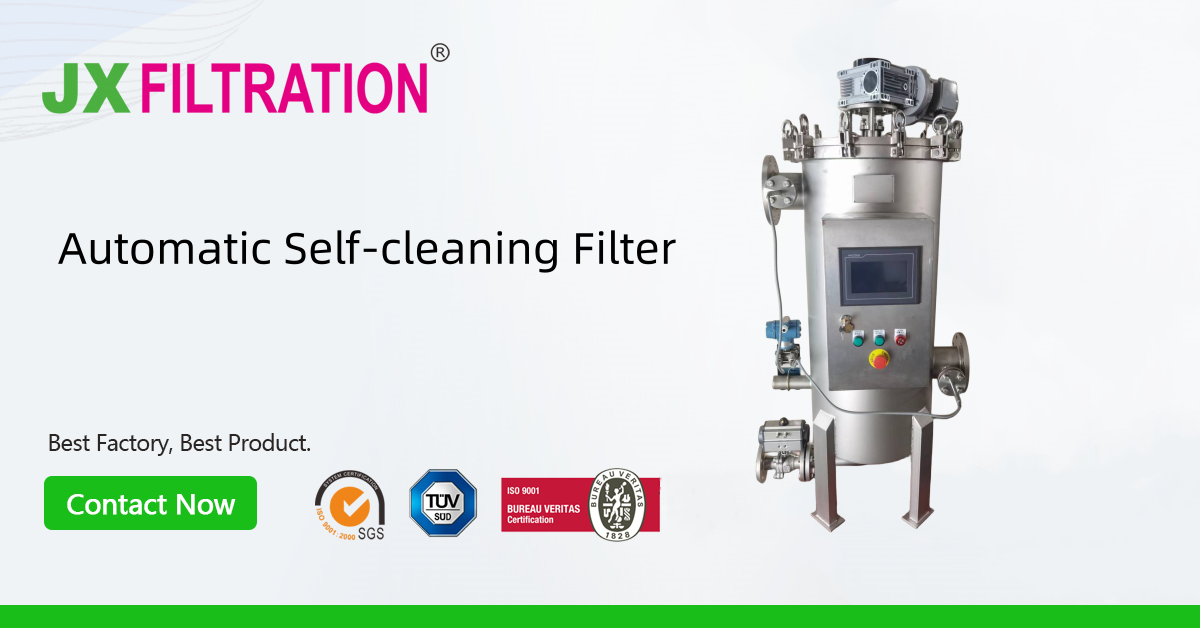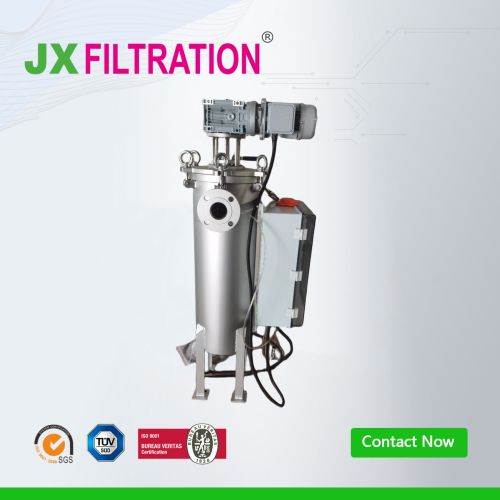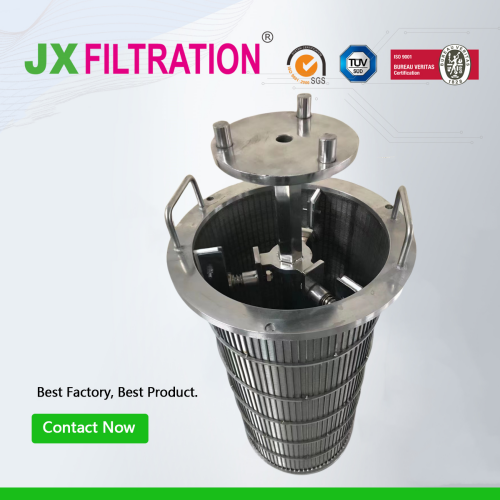Notes of Automatic Self-Cleaning Filter
The self-cleaning filter is a precision device that utilizes the filter screen to directly intercept impurities, floating debris, particles, etc., in the liquid, while reducing water turbidity and minimizing dirt. It ensures the normal operation of downstream equipment and prolongs the service life. One notable feature is its automatic backwashing capability.

Working Principle:
Water enters the filter through the inlet, passes through the coarse filter component to remove larger particle impurities, and then reaches the fine filter screen. After filtering out finer particle impurities, clean water is discharged through the outlet.
During the filtration process, impurities gradually accumulate on the inner layer of the fine filter screen, creating a pressure difference on both sides. When this pressure difference reaches a preset value, the automatic cleaning process begins: the drain valve opens, the hydraulic motor chamber of the main component and the hydraulic cylinder release pressure, expelling water. The pressure drop in the hydraulic motor chamber and the suction pipe is substantial. Due to negative pressure, dirt on the inner wall of the fine filter screen is sucked in through the suction nozzle. The hydraulic motor chamber is then flushed out through the drain valve, completing a suction and cleaning process. As water flows through the hydraulic motor, it drives the suction pipe to rotate, and the axial movement of the hydraulic cylinder piston, combined with the rotational movement, thoroughly cleans the entire surface of the filter screen. The entire cleaning process lasts for several seconds. The drain valve closes at the end of the cleaning, increased water pressure causes the hydraulic cylinder piston to return to its initial position, and the filter is ready for the next flushing cycle. Normal filtration work continues uninterrupted during the cleaning process.
Principle of Automatic Backwashing:
As mentioned earlier, backwashing is achieved by the action of the hydraulic valve opening and the hydraulic cylinder piston, both controlled by the backwashing controller. The backwashing controller accurately controls the hydraulic valve and hydraulic cylinder based on the pressure difference values transmitted from the inlet and outlet of the filter. The controller is powered by the pressure in the pipeline itself.
Characteristics of Self-Cleaning Filters:
During backwashing, continuous water supply, and the entire backwashing process is achieved by cleaning every point of the suction nozzle. The small local pressure change between the suction nozzle and the fine filter screen during backwashing does not affect normal water supply. At the same time, the amount of water consumed during backwashing is minimal. For example, for a filter with a flow rate of 300m3/h, the backwashing flow rate is 35-40m³/h, the backwashing time is 7-15 seconds, and the backwashing water volume is 80-160L.
Eight Points to Note for the Use of Self-Cleaning Filters:
- The self-cleaning filter should only be used according to the rated voltage/frequency indicated on the nameplate.
- The filter should be maintained at regular intervals. Before cleaning and maintenance, be sure to disconnect the power supply.
- Ensure that the power plug is not wet during cleaning. If wet, it must be dried before reconnecting the power.
- Do not unplug the power cord with wet hands.
- The self-cleaning filter is only suitable for indoor aquarium use.
- If the filter is damaged, especially if the power cord is damaged, it cannot be used.
- Ensure that the self-cleaning filter operates at the correct water level and should not be used in the absence of water.
- Do not disassemble or repair it privately to avoid danger or damage to the unit. Repairs should be done by professional
Any Requirements, Contact Us Now!
Kris
Email/Teams: kris@filtrationchina.com
Mobile/Whatsapp/Wechat: +86 18980776200


